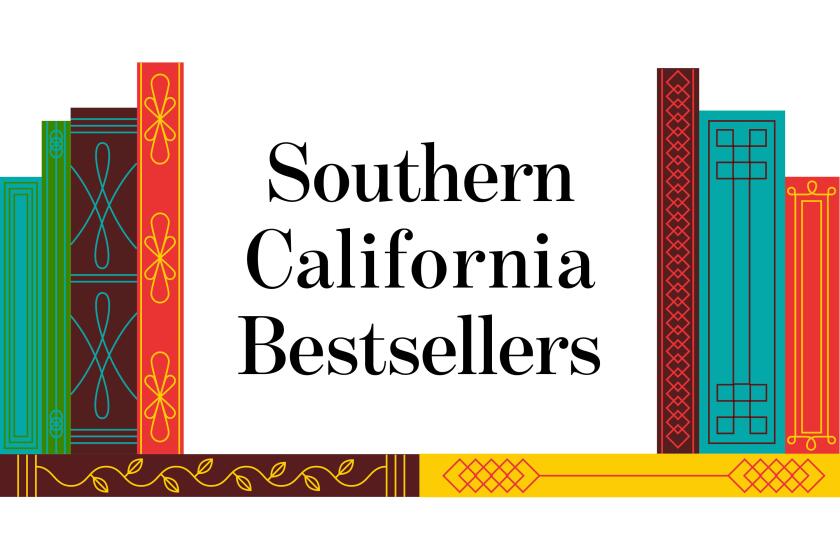Mixed Messages
- Share via
In her book, feminist scholar Marilyn Yalom asks the provocative question: To whom do women’s breasts belong? Women, or men?
In “A History of the Breast” (Knopf, 1997), Yalom traces the history of women’s breasts through the ages--from the original Madonna to the singer Madonna.
Only in the last few decades, she argues, have women claimed their breasts as their own. Sadly, that’s partly a necessity born of the terrifying statistics surrounding breast cancer. Breasts are no longer merely life-givers; they are life-destroyers too.
Yalom, a senior scholar at the Institute for Women and Gender at Stanford University, promises in her book to make the reader “think about women’s breasts as you never have before.”
“A History of the Breast” has received good reviews. The New York Times called it “variously enlightening, amusing and enraging,” and Publishers Weekly said it is “enlightening and often surprising.”
In chapters called “The Sacred Breast,” “The Erotic Breast,” “The Political Breast,” “The Psychological Breast” and “The Liberated Breast,” Yalom journeys from the French Revolution to Freud, from the Bible to bra burners.
She talks about the dichotomy between the sacred breast and the erotic breast, between the “good breast” and the “bad breast.”
“The idea of the good breast versus the bad breast is a very ancient notion that can be traced back to the Old Testament,” Yalom said during a recent telephone interview. “The good breast is nurturing and comforting, the bad breast is aggressive and can lead [men] astray.”
For women, Yalom points out, the “bad breast” has a very different meaning: as a possible source of cancer and death.
In doing research for what apparently is the first history of its kind, Yalom was able to discover very little about what pre-20th century women thought about their breasts. Paintings and poetry about breasts were all from the hands of admiring (or judgmental) men. With the women’s movement, women at last began to have their say about their own bodies.
Yalom’s fascinating study depicts such pivotal moments in the cultural history of breasts as the French Revolution, when the use of wet nurses was condemned and breast-feeding was lauded as patriotic. The religious or sacred depiction of breasts in artwork gave way to a sexier image during the Renaissance, Yalom said. She cites as the clearest example the painting “The Virgin of Melun,” pictured on the cover of her book. Ostensibly Madonna and child, the painting actually depicts the mistress of the French king Charles VII, who would seem to be offering her exposed breast to her royal boyfriend, not to baby Jesus.
Yalom looks at how fashion and even wars have influenced whether big breasts or small breasts are “in.”
During and after World War II, for example, va-va-voomish breasts--”conical” or “projectile” or even missile-like breasts--were all the rage.
In the 1960s, as women increasingly took control of their own image, they rejected the Jayne Mansfield-model for a softer, more androgynous look.
Today, Yalom said, women’s views of their breasts are complicated. Breast augmentation and breast reduction surgery are both popular. Stores can’t keep Wonderbras in stock.
“We would like to think that women have greater autonomy, and we do in some respects,” said Yalom, who is 65, married and a mother. “But we are very far from the sense that our bodies are uninfluenced by male desire.”
She said anorexia may be a response by girls who are “threatened by the advent of breasts.”
“In this society, large breasts are identified with a lack of intelligence. The word ‘boob’ has a double meaning,” Yalom said. “It’s not an unmixed blessing to have large breasts, because they draw men in.” Ironically, small breasts were aesthetic ideals in the Middle Ages, when girls as young as 13 were marriageable, Yalom said.
Women today are ambivalent toward their breasts because they have multiple functions: as givers and providers of sexual pleasure, as “maternal” breasts and as “enemies” because of breast cancer, Yalom said.
The breast-feeding pendulum also has swung back again, with breast-feeding becoming politically correct after decades in which formula reigned.
In her final chapter, Yalom concludes that the breast is in crisis.
“Today, it is the tragic reality of breast cancer that is bringing women in full possession of their breasts,” she writes. “Perhaps the return of the pronounced bosom to fashion and the media is a way of denying the fears we hold about the future of the breast.”
More to Read
Sign up for our Book Club newsletter
Get the latest news, events and more from the Los Angeles Times Book Club, and help us get L.A. reading and talking.
You may occasionally receive promotional content from the Los Angeles Times.










